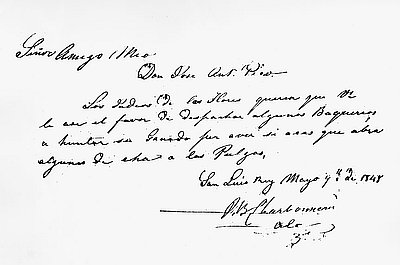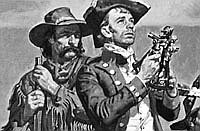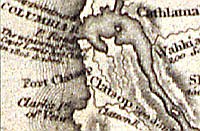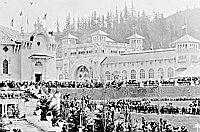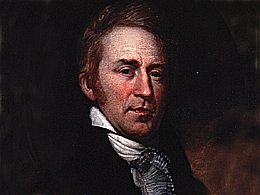Homeward Bound and a Fatal Encounter
The captains split the Corps at Traveler’s Rest, sending the larger group with Clark back on their westward course of the previous year to the Three Forks of the Missouri, and then cross-country to explore the Yellowstone River. Lewis, with a smaller contingent, traveled northeast on a trail that led them “up the East branch of Clark’s river and a river they [Indians] called Cokahlarishkit or the river of the road to buffaloe” to the Continental Divide, where they descended the Sun River to the Missouri on their way to scout the upper reaches of the Marias River.
Both groups focused their attention on geography. Clark surveyed the Yellowstone, hoping to evaluate the region’s natural resources and also to meet up with Crow Indians. Lewis returned to the Marias intent on making contact with northern Indians—Blackfeet and Atsinas—and figuring out the geography of the far northwest corner of the Louisiana Territory.
Clark’s investigation of the Yellowstone convinced him that the river basin included some of the finest fur-trapping areas in the West. Beginning at Three Forks, Clark made his way to the Yellowstone with a company of twelve, including Sacagawea and Toussaint and Jean Baptiste Charbonneau. The remainder he sent down the Missouri in canoes, under the command of Sergeant John Ordway,to meet up with Lewis. On the Yellowstone, minor calamities made the trip challenging, including the theft of horses by Crow Indians, but the party descended the river without major mishaps. Clark had reached the mouth of the Yellowstone on August 3 and rejoined Lewis eight days later just upriver from the Mandan Villages.
Lewis had a much more difficult time on the Marias. He took interpreter George Drouillard and Reubin and Joseph Field with him up the river, and left the others at Great Falls to intercept Ordway and his group from Clark’s Yellowstone party. Jefferson had instructed Lewis in November 1803 to “fix with precision . . . the contour of our new limits,” which meant determining how far north the Marias extended. Convinced that the Marias did not extend north of the 50th parallel, Lewis turned back toward the Missouri, confident that he had seen the far northwestern edge of the Louisiana Purchase.
On July 26, the party encountered eight Piegan Blackfeet with a sizeable group of horses. Worried about an attack, Lewis decided to invite the Indians to camp with them along Two Medicine Creek. Lewis engaged the Piegan in the same diplomacy he had employed throughout the Expedition. He learned that they traded with the Hudson’s Bay Company on the Saskatchewan River, well north of the Louisiana Territory.
In an attempt to gain their confidence, Lewis proclaimed American intentions to trade arms and goods with all willing tribes in the region who would make alliance with the United States. Further he boasted that he had already aided in quelling wars among other Indian groups in the region, declaring that he
had come in surch of them in order to prevail on them to be at peace with their neighbours particularly those on the West side of the mountains and to engage them to come and trade with me when the establishment is made at the entrance of this river to all which they readily gave their assent.
The Piegan must have received this information with some alarm, because they had held sway on the northern Plains through their steady supply of firearms in trade with the British. Arming their adversaries could not have been welcome. Whether this issue prompted their actions that night is unknown, but they took advantage and stole guns and horses before dawn. Suddenly awakened, Lewis and his men pursued the Piegan, resulting in two deaths, one by knife and another, Side Hill Calf, shot dead by Lewis. The men gathered their gear quickly, but before fleeing to meet Sergeant Ordwayand other Corps members descending the Missouri, Lewis “left the medal about the neck of the dead man that they might be informed who we were.”
The firefight on the Marias produced the only Indian casualties and the only violent deaths on the whole Expedition. The message Lewis sent to the Piegan that Americans planned to arm their adversaries, much more than the violence on the Marias, set the Blackfeet against Americans on the upper Missouri. The Piegan defended their territory and connections with the British for decades, as Americans tried to expand fur trading into the region. In that larger sense, there is no other way to see the episode than a failure in diplomacy. Perhaps because of those events, when the Corps reunited and revisited the Mandan Villages, Clark took the lead in negotiations with Indian chiefs.
© William L. Lang, 2004. Updated and revised by OHP staff, 2014.
Sections
Related Historical Records
Hudson's Bay Company Blanket
White blankets like this Hudson’s Bay Company (HBC) blanket were among the first to be traded among fur trappers and Native Americans in North America. They were especially …
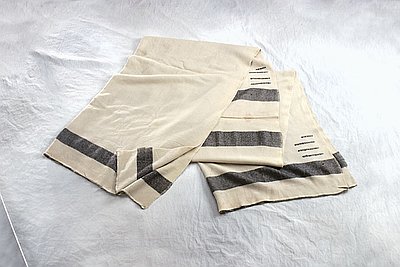
From George Drouillard to his Sister
George Drouillard, a member of the Lewis and Clark Expedition, wrote this letter to his sister on May 23, 1809. It was probably transcribed in about 1900 by …
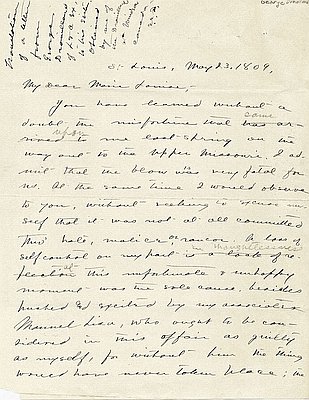
From Jean Baptiste Charbonneau
As the youngest member of the Lewis and Clark Expedition, Jean Baptiste Charbonneau holds a special place in the history of the American West. Charbonneau was born at …
